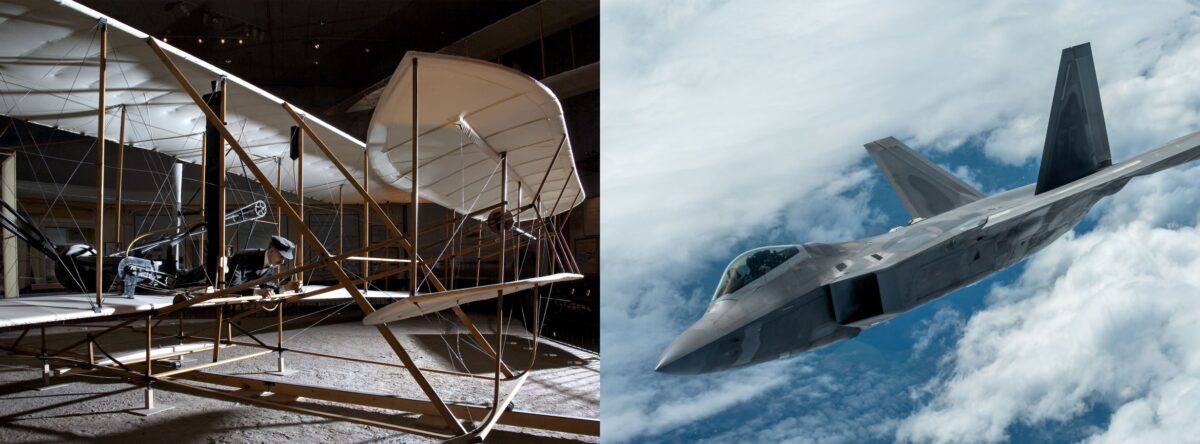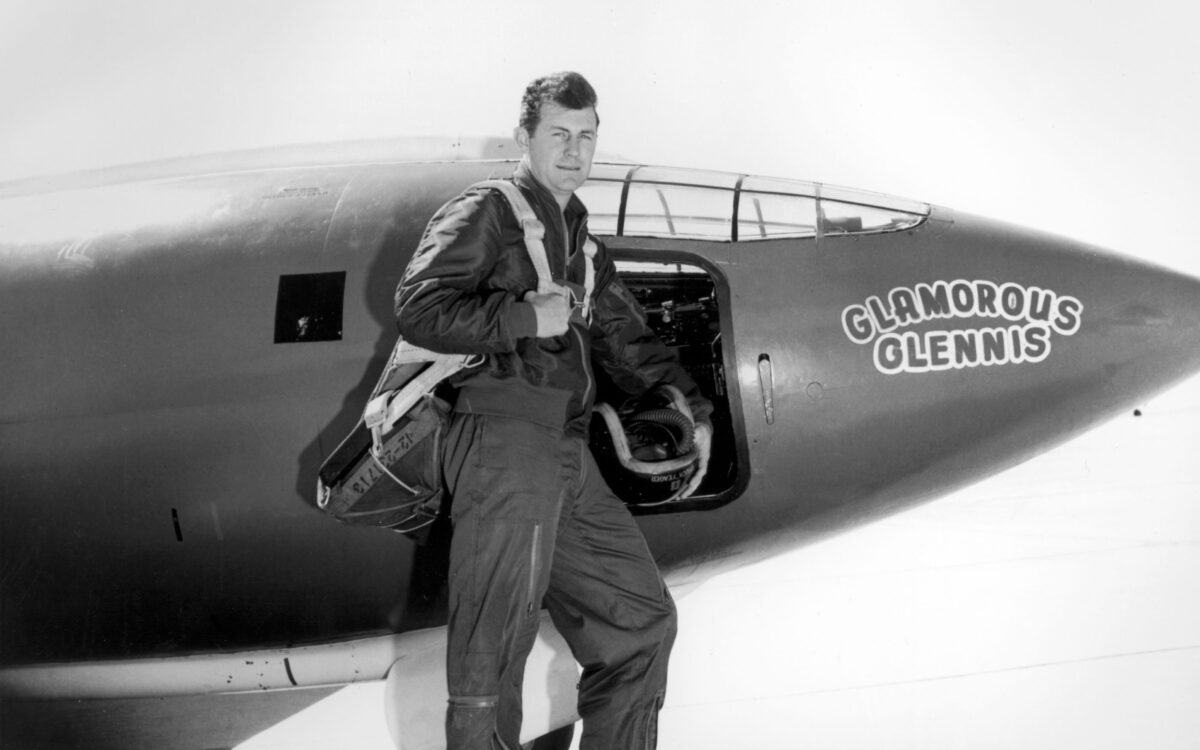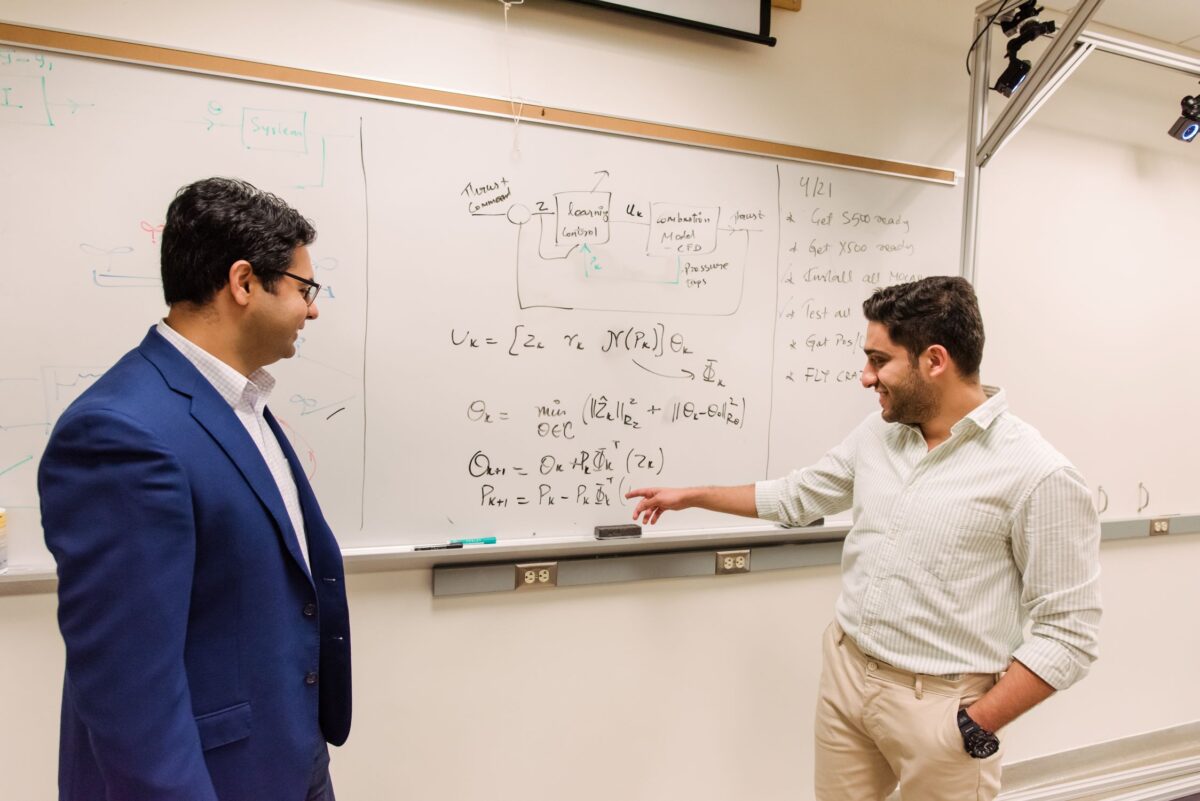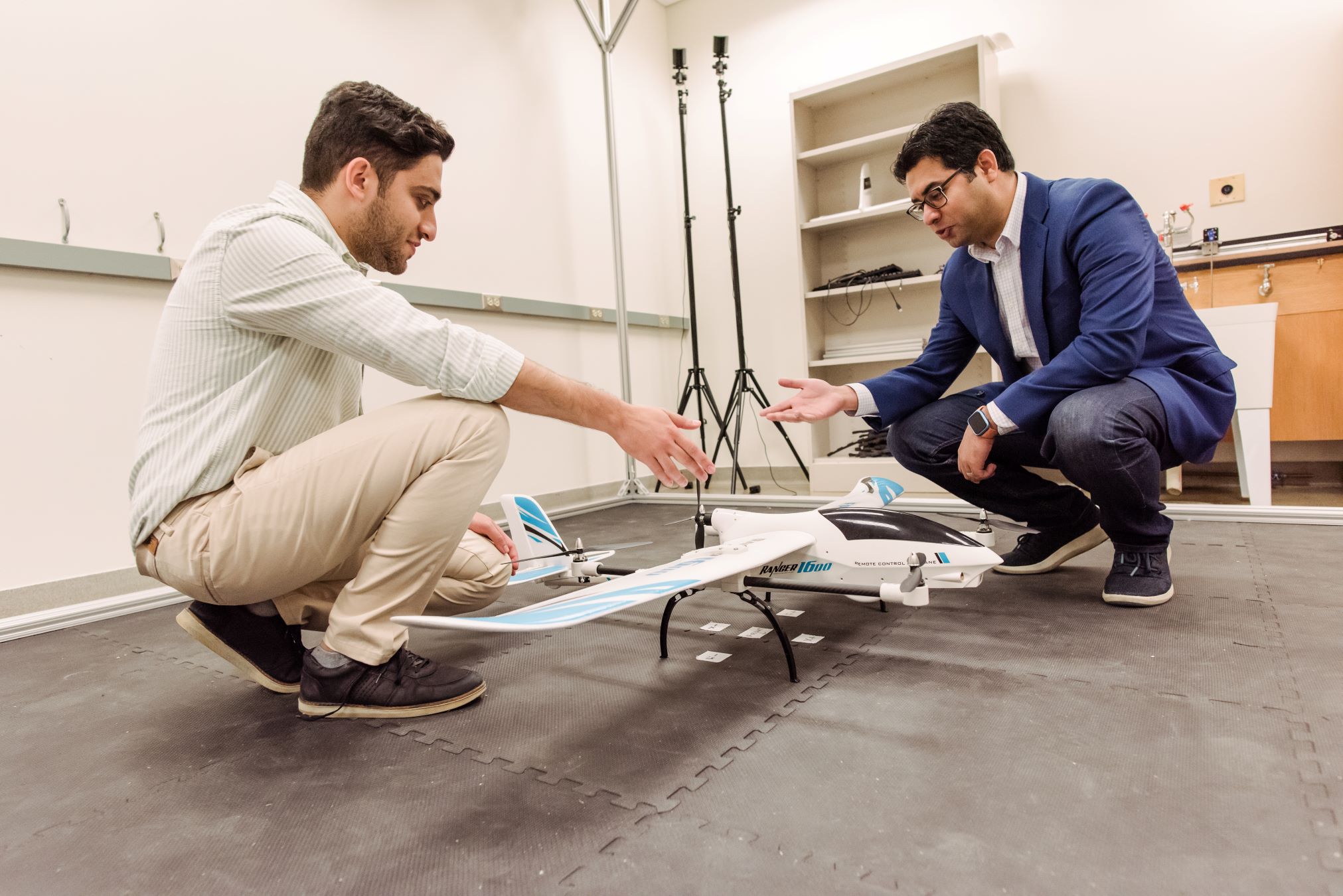When the Wright brothers first launched their famous plane off the tall sand dunes near Kitty Hawk, North Carolina, it flew slower than a person can run. Now, military fighter jets routinely rip through the air at supersonic speeds of 1,000 miles per hour or more. Uncrewed experimental aircraft have even gone hypersonic, traveling more than five times faster than the speed of sound.
Flying at such breakneck speeds presents an array of engineering challenges, from the stresses on the materials to the struggle to control the aircraft.
“When flying above the speed of sound, the operating environment can degrade extremely quickly and there is very little time to react,” says Ankit Goel, an assistant professor of mechanical engineering at UMBC. “If a correcting control signal is not applied quickly enough, catastrophic failure is almost always guaranteed.”

Goel has been investigating better ways to control aircraft flying at hypersonic speeds, by primarily focusing on the vehicle’s engine. He recently received more than $850,000 in funding from the Office of Naval Research to further the investigations. Over the next three years he will partner with Kyle Hanquist at the University of Arizona and researchers from the Naval Air Warfare Center (NAWC) to develop improved engine control strategies and assess their performance in ground experiments conducted at the NAWC facility at China Lake, California.
Powering superfast flight
The first airplane to break the sound barrier—the Bell X-1 piloted by Chuck Yeager in 1947—was dropped from the bomb bay of a Boeing B-29 and fired rocket engines to accelerate to its top speed.

Rockets are incredibly powerful, but they also guzzle fuel. A more efficient alternative for fast flight is an air-breathing engine called a ramjet. Ramjets, which work best above the speed of sound, exploit the fast forward motion of the plane to effectively “ram” air into the engine and compress it. Squeezing the air heats it up, and the hot air then spontaneously ignites the fuel. As the burning mixture is channeled out the back of the engine, it pushes the aircraft forward.
Ramjets can burn either liquid or solid fuel. In the solid fuel version, which Goel and his collaborators are concentrating on in this latest project, sand-like grains of solid fuel are pressed together and embedded in the sides of the engine. This eliminates the need for pumps and other equipment to inject liquid fuel. It also means the fuel can more easily be transported and stored.
A solid fuel ramjet engine’s design is simple, but its operation is finicky. Structural vibrations, changes in airflow, and too much or too little heat can all cause the engine to stop working suddenly. Sometimes the engine will “buzz” in a rapid series of undesirable starts and stops, a state known as “engine unstart.”
“More reliable control of the engine could enable faster flight, longer range, and better maneuverability,” says Goel. To get that better control, Goel and his collaborators must grapple with the complex and chaotic environment inside the engine.
A tricky controls problem
Imagine a car driving along a hilly road. If the driver wants to maintain a constant speed, they must press the gas pedal harder going up the hills. If the car has cruise control, a computer can do the work of the driver. This is an example of a relatively simple control problem.

The inside of a solid fuel ramjet engine presents an example of a not-so-simple control problem.
A number of factors make the problem especially difficult. For starters, conditions inside the engine are constantly and rapidly changing. As the solid fuel burns away, the shape of the combustion zone inside the engine changes, which changes the airflow, which affects the rate of burning. Conditions shift dramatically in less than one-thousandth of a second. The system is also very sensitive to slight perturbations. A small change in flow conditions upstream can lead to big changes downstream.
It’s nearly impossible to completely understand and model what is going on.
In the face of such complexity, Goel is turning to a control technique that’s relatively novel in aerospace applications: machine learning. The beauty of machine learning is that it can solve problems without needing a conceptual understanding of them. The downside is that most machine learning requires enormous datasets and large amounts of computational power to work, two resources that aerospace applications typically lack. However, Goel and his collaborators have found a potential solution.
Real-time learning for aerospace
The researchers are experimenting with a technique that can learn, quite literally, on the fly, rather than being trained ahead of time. This distinguishes the technique from typical machine learning. While the ramjet is operating, the learning algorithms will continually re-evaluate the relationship between two simple factors—a measure of the air that’s being let into the engine and the thrust that the engine is generating—and use that relationship to drive the generated thrust to a desired value. By implementing a learning-based control scheme, the technique can control the output of the engine while ignoring the complexity of what’s actually happening inside.
The researchers plan to test their model first on computer simulations of a ramjet engine, and then on the real thing.
The ultimate goal is to embed the learning controller in a system that would take pressure sensor measurements from an engine in flight and use them to rapidly adjust the airflow into the engine—perhaps making thousands of small changes a second—to control the thrust. This would mean that flight operators could count on getting the requested thrust from the engine, even if flight conditions are changing.
Goel says the proposed learning technique could also be used on systems far removed from superfast aircraft. “The key insights into what makes the technique work in highly unmodeled and uncertain systems will allow us to generalize it to a large body of interesting dynamic problems,” he says. The team is already thinking about applying it to other types of aircraft, such as vehicles that use flapping wings or that take off and land vertically.

Parham Oveissi, a Ph.D student in mechanical engineering at UMBC who will be involved in the research, says he is motivated by a deep interest in developing control techniques for aircraft, an interest he has nurtured since childhood, when his parents gave him a toy quadcopter. “This early encounter ignited an enduring curiosity within me, driving me to unravel the mysteries of flight and explore methods of controlling these machines,” he says.
The research project will be an exciting opportunity to develop his knowledge and skills. “I’m excited to collaborate with professionals, gain valuable research experience, and see the impact of my contributions,” he says.
The success of the project will hinge on the joint efforts of researchers with a variety of skill sets, from a variety of institutions.
“This work requires an interdisciplinary team,” says Kyle Hanquist, an assistant professor in the Department of Aerospace and Mechanical Engineering at the University of Arizona who will contribute his expertise in reactive flow modeling to the project. “We are working together to tackle a difficult problem that none of us could tackle on our own.”




